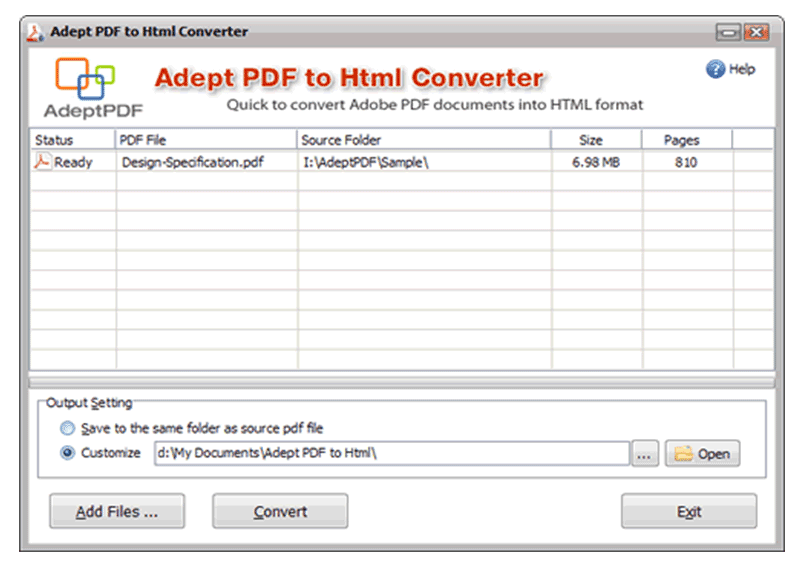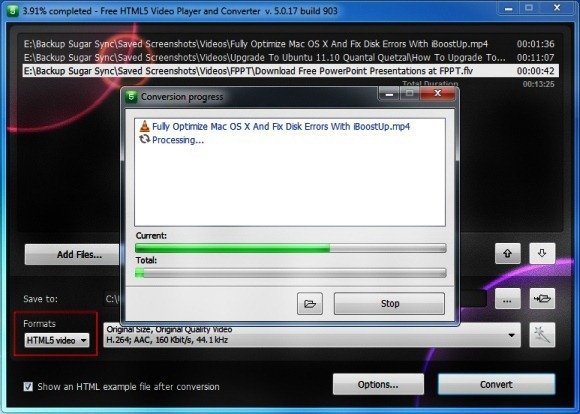

Understand why it is vital, but doing it at the HTML level? HTTP code needs to convert these strings, what happened to it.

Perhaps this is called collateral damage. Now it depends on this, and that and whether it's Thursday. A long time ago, when the world was young and we were foolish, we used align="center" on anything and it worked. "How do I love thee? Let me count the ways." (Elizabeth Barret Browning) "How do I center something in HTML? Let me count the ways" (W3C). Grudging acceptance of the bright shiny future. Here the overall impact, once we found and made all the CSS changes, is positive.
#Convert html to html5 upgrade#
We needed to upgrade a lot of our CSS definitions, write a bunch of new ones and start using multiple classes of the form class="class1 class2". width=, align=, cellpadding=, cellspacing=, summary= (they used to force us to use this for accessibility), border=.


Remove all the HTML attributes that control layout. Ain't nothing changed at the end of it - 'cept the pages validate as HTML5. This one is hard labor with no real upside. And our pages do a lot of internal linking as a reader service. Replace with an id="" in the nearest container. Global find and replace for ' />' with '>' (img, br, hr, input). So when the great HTML5 betrayal started, even the HTML 4.01 validator croaked on them. Remove all those carefully closed tags that we used in preparation for XHTML starting in 2001! They used to work fine with the HTML4.01 validator - they were even the recommended procedure by the great and good. Here is what we needed to do to our pages: Finally, write-once-use-many-times may be a plausible goal. However, it should also make writing good CSS based word processors viable and document conversion much more flexible. Complete separation of text and formatting and all that motherhood. While a pain to remove, we agree this is generally a Good Thing ™ (and probably about the only thing we 100% approve of in HTML5 - we're sure the designers are happy to have our endorsement). The HTML stuff works fine in HTML 4.01 (well it validates), but croaks in HTML5.
#Convert html to html5 update#
Quick layout fixes, too lazy to update the CSS, too little time to think about the implications for other stuff that uses the same class definition, too stupid to understand the CSS specifications - lots of reasons - all bad. We have a lot of HTML attributes controlling style still lying around on the pages (width=, cellspacing= and so on). We eliminated almost all of the font tags in 1999 when we started the move to CSS. Slob-like behaviour gets what it deserves. In general, we regard the use of style attributes as poor policy for which there is really no justification and are slowly trying to eliminate them. We have a number of style attributes lying around because we were too lazy to build a new class definition. We use CSS class attributes almost exclusively in HTML. Maybe we have, unconsciously, developed the site within the limitations of CSS2 over the years. Our pages use the following capabilities that we care about:ĬSS2 - we have no CSS3 and little desire to use it at this point. W3C Version of the WHATWG Living Standard (With some subtle differences - what joy) Our Pages Care About. They must be tearing their hair out in the W3C validation group. Just the sort of confidance building statement you want in a validation tool. And the poor old W3C page validator, which used to be a thing of great precision way back when, now validates every HTML5 with one warning which says (we paraphrase) ".this page validates at this precise second as HTML5 but may never, depending on the whim of some unaccountable group of individuals, validate again.". At this stage (November 2013) this simply means removing all the negative stuff that HTML5 validators croak on. Our motivation is simply to get pages to validate as HTML5. We, so far, use no genuine HTML5 features - way too premature in our view (there is not, and never will be, a stable standard for goodness sake - just a flaky reference to Implemented and widely deployed). It is more in the nature of a checklist for us than any deep or insightful HTML5 article. This page documents our conversion to HTML5 from HTML4.01 Transitional (started late 2013).


 0 kommentar(er)
0 kommentar(er)
